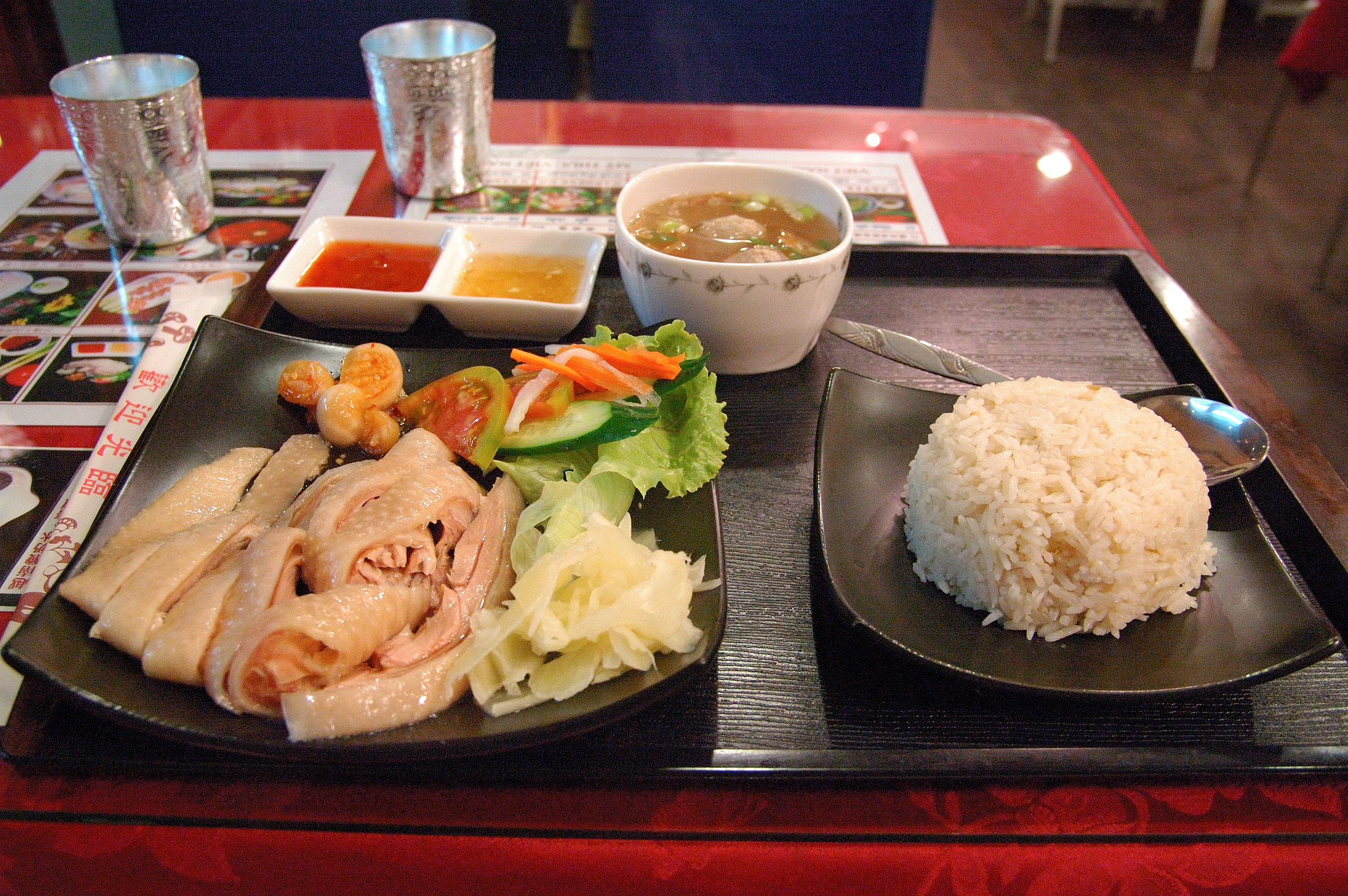Food in Vietnam
Food in Vietnam is not just about what you eat: it is a seamless blend of tradition, climate, history, and philosophy. Vietnam is one of the world’s leading rice producers, and rice is a staple across the country.
Yet the food bears interesting regional differences, and one can find several specialities in different corners of Vietnam. From the more delicate pho, to the more absurd animal blood soup and fetal duck egg, Vietnam has so much in store. Read through our article on Food in Vietnam to know what to put on your Vietnam bucket-list.
 The food in Vietnam is so tempting and delicious, it will definitely leave you craving for more.
The food in Vietnam is so tempting and delicious, it will definitely leave you craving for more.
One country, three distinctions – Regional features
Vietnam is largely divided into three regions- the north, central and south. Each region has its own distinctive flavours and specialities, reflecting the differences in climate and geography.
Northern Vietnam, that lies closest to China, has Chinese influences in its cuisine in the form of stir-frying and noodle-based dishes, and the use of soy sauce. Additionally, the food is not very spicy, as the cool climate of the north is not suited to growing chillies. Instead, local make use of black pepper.
Central Vietnam on the other hand has the spiciest cuisine found in Vietnam, due to the abundance of spices grown in its mountainous terrain. Additionally, the coastal stretch makes seafood a natural staple.
Southern Vietnam has a mix of sweet and spice, the sweetness coming in due to the use of sugar and coconut milk. Interestingly, this is an influence that the cuisine has absorbed from neighbouring countries Cambodia and Thailand. A wide variety of vegetables and fruits are also a common feature, due to ideal climatic conditions.
 You can find a variety of fresh fruits and vegetables in the markets of Vietnam.
You can find a variety of fresh fruits and vegetables in the markets of Vietnam.
5 Must-Haves of food in vietnam
The food of Vietnam may be diverse, but we’ve listed down five stand-out dishes that are definitely on the list of the best food in Vietnam.
Arguably Vietnam’s most famous dish known around the world, pho consists of a clear beef or chicken-based broth, rice noodles, herbs, and thinly sliced meats, along with fresh herbs, crunchy bean sprouts, and sometimes chillies and lime. There are many other types of noodle soups similar to pho, with different sorts of rice noodles, spices and meat.
A legacy left behind by the French, banh mi refers to the baguette sold on the streets. It is generally stuffed with meats, pickles and veggies to make a delicious sandwich.
Ban Xeo literally translates to ‘sizzling pancake’, and is thus named for the loud sizzling of the rice batter as it is poured into the hot skillet. This delicious pancake is crammed with bean sprouts, shrimp, pork and mung beans.
The appetising fresh spring rolls have a mixture of pork, prawn, vegetables, rice vermicelli and other ingredients wrapped in Vietnamese rice paper. Banana flower salad makes use of the banana blossom, which is mixed with thinly sliced pork, beansprouts and onion. Add to this a dash of spices such as sugar and vinegar, and you have yourself a delicious fresh salad.
 Vietnam’s most famous dish- Pho, can be easily found across the country and is a total must-try.
Vietnam’s most famous dish- Pho, can be easily found across the country and is a total must-try.
Health, culture, culinary experience- Philosophies of Vietnamese cuisine
The Vietnamese center their food on the principle of Yin-Yang and the Wu Xing (Five Elements) theories of Asian philosophy. Yin and Yang is the idea of contrasting-yet-complementary forces that work in unison to make a balanced whole. In Vietnamese cuisine, the Yin and Yang are related to the heating or cooling effect ingredients have on our bodies after being consumed.
Thus, cool or Yin ingredients (cabbage, seafood, lettuce) are always paired with hot or Yan ingredients (ginger, chilli, garlic). Related to this is the theory of the 5 Elements: the 5 five elements (metal, wood, water, fire and earth) each represent the 5 changing states of the cosmos. The Vietnamese have incorporated this in the form of using all five flavours (sour, bitter, sweet, spicy and salty) as well as in the involvement of all five senses (sight, smell, sound, taste and touch) in consuming your food.
 You can find a mix of all the flavours in the Vietnamese cuisine. Not just that: they also involve of all five senses in the food consumption.
You can find a mix of all the flavours in the Vietnamese cuisine. Not just that: they also involve of all five senses in the food consumption.
Traditional Meals
Food in Vietnam is a family affair, and is deeply rooted with their sense of familial bonds and community. A traditional family meal often consists of a portion of rice, some vegetables (like morning glory or spinach) and a couple of main dishes with meat or tofu. Everyone gets a bowl instead of a plate where you first put rice, and then add the other main dishes you like.
The bowls are fairly small, and the meal stretches on for a while, allowing families to bond as they eat. We also advise getting a grip (pun intended) on your chopstick skills. 9 out of 10 times, you will be served food in a bowl, which makes eating with chopsticks easier. Avoid sticking your chopsticks upright in your bowl, or playing around with them. This is considered to be disrespectful and goes against Vietnamese etiquette. Instead, place them on the designated chopstick holder, or at the side of the bowl.
 A traditional Vietnamese meal consisting of some rice, vegetables and meat. Make sure you follow the Vietnamese etiquette while having your meal.
A traditional Vietnamese meal consisting of some rice, vegetables and meat. Make sure you follow the Vietnamese etiquette while having your meal.
Street Food for the win
The street food culture is big in Vietnam, and even the locals eat at least one meal from the numerous stalls each day. You will easily find all five of our must-try dishes at street stalls in the streets.
Though they are available in restaurants and hotels, the flavours there are tame. It is these stalls that have the most authentic Vietnamese cuisine. The good news is due to the amounts of vegetables and fresh herbs, it is extremely healthy! Our advice? Embrace it. There’s also a range of fresh fruits you must try to sample, as the weather in Vietnam is suited to growing fruits and veggies.
The fruits are plentiful and you can purchase them from the stalls on the roads. There’s also fruit orchards you can visit.
 Authentic and mouth-watering Vietnamese cuisine found on the streets of Vietnam, is an unmissable experience.
Authentic and mouth-watering Vietnamese cuisine found on the streets of Vietnam, is an unmissable experience.
While you’re at it, make sure you sample some of the amazing Robusta coffee, and the classic Vietnamese drip coffee. Lastly, the Bia Hoi Junction in Hanoi is a must to experience the interesting Vietnamese microbrew bia hoi. The price of food in Vietnam depends a lot on where you eat it, but rest assured it is affordable. Food in Vietnam is nothing short of a mini adventure, and we hope this has awakened the foodie in you. Click on ‘Plan Your Trip’ to get one step closer to experiencing this amazing cuisine.
helping you travel your way
We provide a helping hand to independent travellers who need assistance with planning and booking their trip. The primary goal is to turn your dream holiday into reality.






